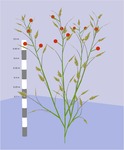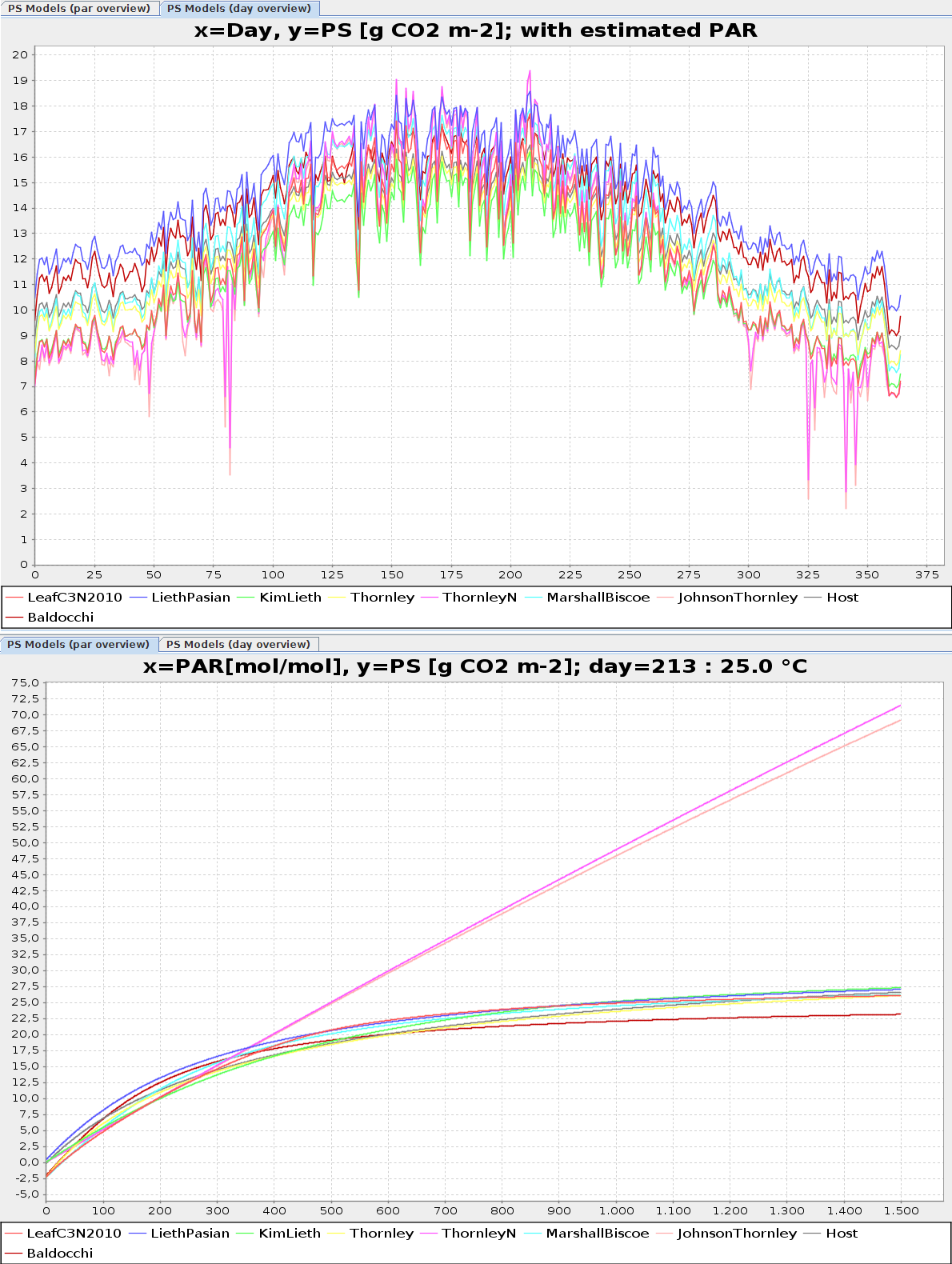All included models are calibrated to fit the LEAFC3N model which is parameterized for barley.
The output is calculated for square meter at the age of 25 days. But if you ant to change this, you need to save the model to run it.
Lieth J.H. and Pasian C.C. (1990). A Model for Net Photosynthesis of Rose Leaves as a Function of Photosynthetically Active Radiation, Leaf Temperature, and Leaf Age. Journal of the American Society for Horticultural Science, 115(3): 486-491.
Müller, J and Eschenröder, A. (2010). CO2, H2O and energy exchange model LEAFC3-N: drought stress effects, optimized solution algorithms, functionality tests. Proceedings of the 6th International Workshop on Functional-Structural Plant Models. September 12-17, 2010. 168-170.
Kim S-H and Lieth J.H. (2003). A Coupled Model of Photosynthesis, Stomatal Conductance and Transpiration for a Rose Leaf (Rosa hybrida L.). Annals of Botany, 91(7): 771–781.
Pien H. (2007). Development of a carbon allocation and growth model for a bent rose canopy. Ph.D. Thesis, Ghent University, Ghent. 252 p. Eq. 7.3.
Thornley J.H.M. and Verberne E.L.J. (1989). A model of nitrogen flows in grassland. Plant Cell and Environment, 12: 863–886.
Thornley J.H.M. (1998). Dynamic Model of Leaf Photosynthesis with Acclimation to Light and Nitrogen. Annals of Botany, 81: 421–430.
Marshall B. and Biscoe P.V. (1980). A Model for C3 Leaves Describing the Dependence of Net Photosynthesis on Irradiance. Journal of Experimental Botany, 31: 29–39.
Baldocchi D. (1994). An analytical solution for coupled leaf photosynthesis and stomatal conductance models. Tree Physiology, 14: 1069–1079.




